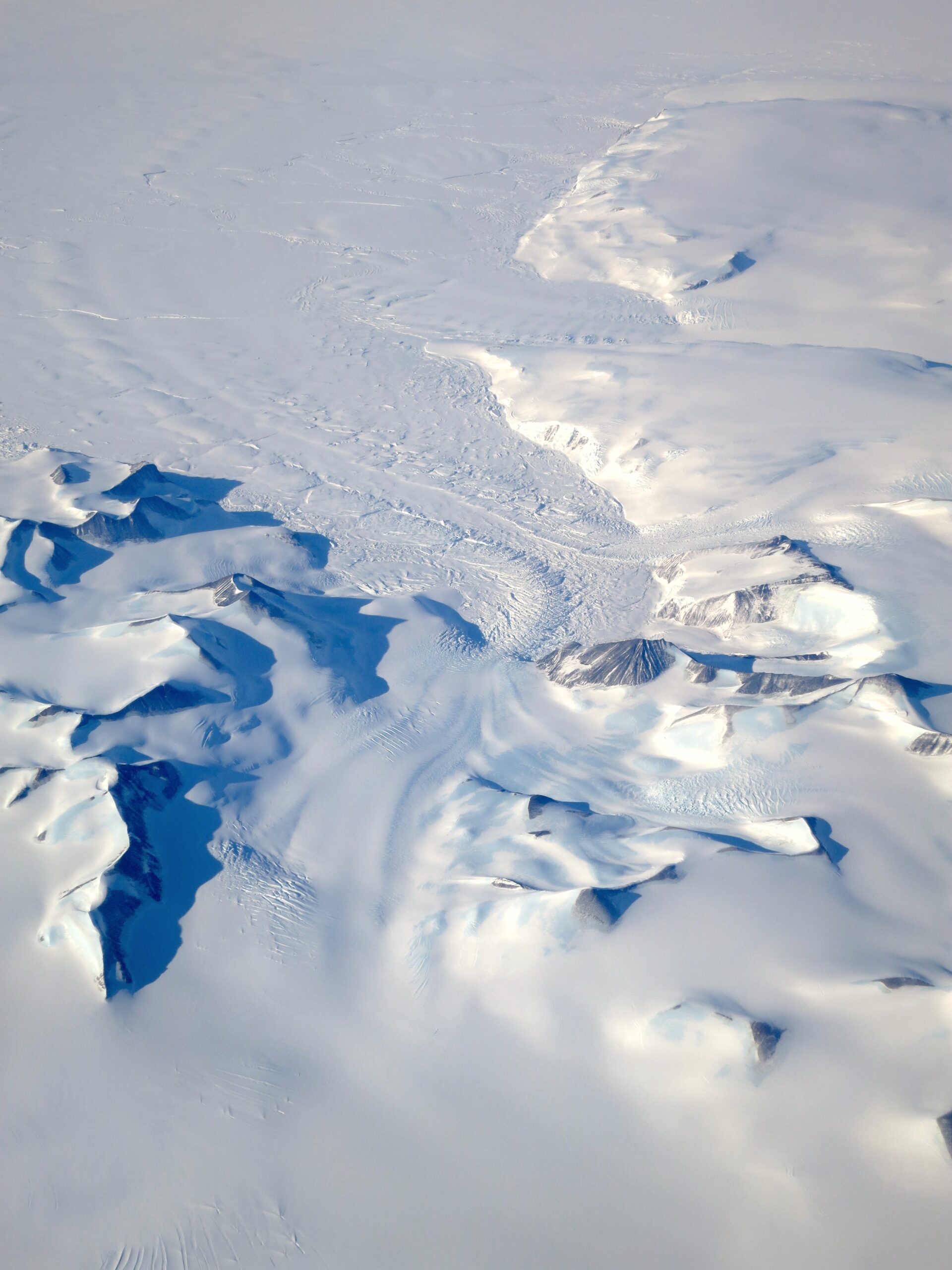NASA’s Operation IceBridge, a survey of polar ice, carried out parallel flights in the north and south poles for the first time in seven years. The mission to the Antarctic Peninsula recorded a big drop in height of the two glaciers at the south pole. The mission to the Arctic collected measurements of depleted land and sea ice at the end of the summer melting season.
In an article on the NASA website, Christopher Shuman, research associate professor at UMBC’s Geography and Environmental Systems department, faculty at UMBC’s Joint Center for Earth Systems Technology (JCET), and research scientist in the Cryospheric Sciences Laboratory at the NASA Goddard Space Flight Center, said that IceBridge’s findings are “not all that surprising given what we have observed with other sensors.”
Other sensors have shown that both poles are losing ice at a fast rate after years of adjacent ice shelf loss, explained Shuman, referencing a study that he co-authored in 2012 which revealed notable elevation losses for the Green and Hektoria glaciers, both in the Antarctic, from 2006 to 2011. “These IceBridge measurements show that once the ice shelves collapse, even some cooling and a good deal of persistent sea ice is not able to hold back these larger glaciers and they continue to lose mass overall,” he said.
Shuman’s research focuses on satellite and modeled temperature data sets from Greenland, where he has been deployed seven times, in collaboration with fellow researchers at NASA’s Goddard Space Flight Center. He has researched changes in ice elevation and glacier mass losses through remote sensing in the Antarctic Peninsula, where he has been deployed in the field six times. Shuman has also developed composite temperature records through data from automatic weather stations.
The 20-year JCET partnership between UMBC and the NASA Goddard Space Flight Center was recently renewed through a cooperative agreement for $46 million over five years.
Image: A glacier winds between peaks in the Antarctic Peninsula captured on Oct. 3, 2015. Photo courtesy of NASA/David Rabine.

